-
Posts
1,020 -
Joined
-
Last visited
-
Days Won
1
Content Type
Profiles
Forums
Blogs
Gallery
Events
Store
Posts posted by Taz
-
-
Thanks Bison,
This is what I have on the numbers:
In 1899 the law of that year created for each regiment of Zouaves a 5th Battalion, "to be stationed in France" in groupes des 5e batallions de Zouaves. The 5th battalions of the 1st and 4th Zouaves were stationed as part of the Gouvernement militaire de Paris. The 5th battalions of the 2nd and 3rd Zouaves were stationed in the r?gion militaire de Lyon. Upon mobilization for war in France, these battalions would form the nucleus of R?giments de Marche de Zouaves , each of 3 battalions.
The four Zouave regiments of the French Army wore their traditional colorful dress during the early months of the First World War. The development of the machine gun, rapid fire artillery and improved small arms obliged them to adopt a plain khaki uniform from 1915 on.
The Zouaves played a major role in the 1914-18 War with their numbers being expanded to nine regiments de marche.
Regards Eddie
0 -
Hi Alex,
A quick look around didn't really turn out many results, there is this one, but some of the site buttons seem to be non-functional. <a href="http://www.parasfrancais.org.uk/indochina/indounindex.htm" target="_blank">http://www.parasfrancais.org.uk/indochina/indounindex.htm</a>
However there are several good books on the subject. <a href="http://www.warbooks.com/france.html" target="_blank">http://www.warbooks.com/france.html</a>
Regards Eddie.
0 -
I bought some months ago this set. The man seems a Zouave and the medals Medaille militaire and Croix de guerre (1914-18), dated the set in the WWI, not any inscriptipn on the photo rear except "carte postale"... but where are the zouve regiments, and what are their numbers??, Any help will be wellcomed!!
Thanks a lot

Miguel
There were four French Zouave Regiments at the outbreak of WWI, the 1st, 2nd, 3rd and 4th Zouaves.
If that helps at all.
Regards Eddie
0 -
0
-
Hi Eddy,
Thanks for the reply. GBP 200 is a lot less than the trade I had to do for me to obtain my medal.
Regards,
Will
Your welcome Will,
Did you see the little snippit of information regarding the issue of these in the Fitzwilliam museum link?
If not here is what it says there.
"This heavy silver-gilt star was manufactured in the besieged city by order of General Gordon by a city jeweller, in an attempt to raise the morale of his beleaguered troops. The design was a copy of the Turkish Order of the Medjidie. Payne reported a story which suggests that owners of these stars became particular targets of the Mahdi's vengeance.
The stars were issued numbered, but not named, and were available for purchase by anyone in the city, military or not".
Regards Eddie.
0 -
Is this medal in your collection? Some sources also refer to the blue ribbon as for the Khedive's Star.It remains a fascinating medal and more and more information is slowly coming out.
sabrigade,
Sadley no, this particular Star was up for auction and eventualy sold for GBP 200.
Regards Eddie.
0 -
This pewter issue star has part of its ribbon still attached.
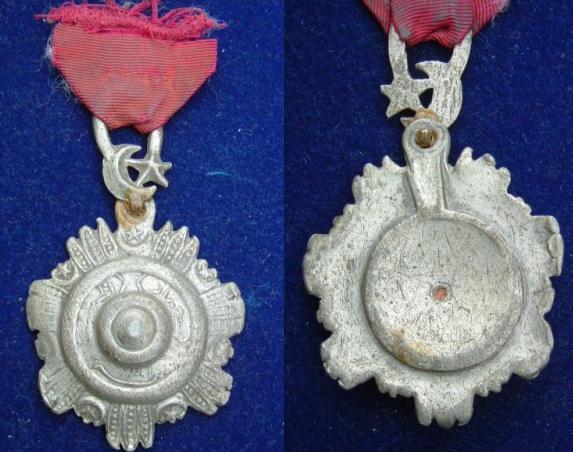
 0
0 -
OK, some crawling the web tells us the following interesting facts:
On Saturday April 28, 1945; at the Piazzale Loreto in Milan, Italy; Benito Mussolini and his mistress Clara Petacci were shot and hanged.
But I have been unable to glean anything off the web that relates directly to Bulgaria for April 28, 1945 or 1955 ???
Rick,
Maybe the 28th April has something to do with the invasion of Austria?
"The first Bulgarian army 130,000-strong, continued on its march to Hungary. There, between 6 and 19 March 1945, it engaged in epic battles; it drove off the Germans attempting to launch a counter-offensive and then, went on the offensive itself.
By April 1945 First Bulgarian army had entered the territory of Austria. On the day of the capitulation of Nazi Germany, it liberated the town of Klagenfurt. There, the soldiers of First Bulgarian Army and the British Eighth Army established contact".
Regards Eddie
0 -
And the reverse.
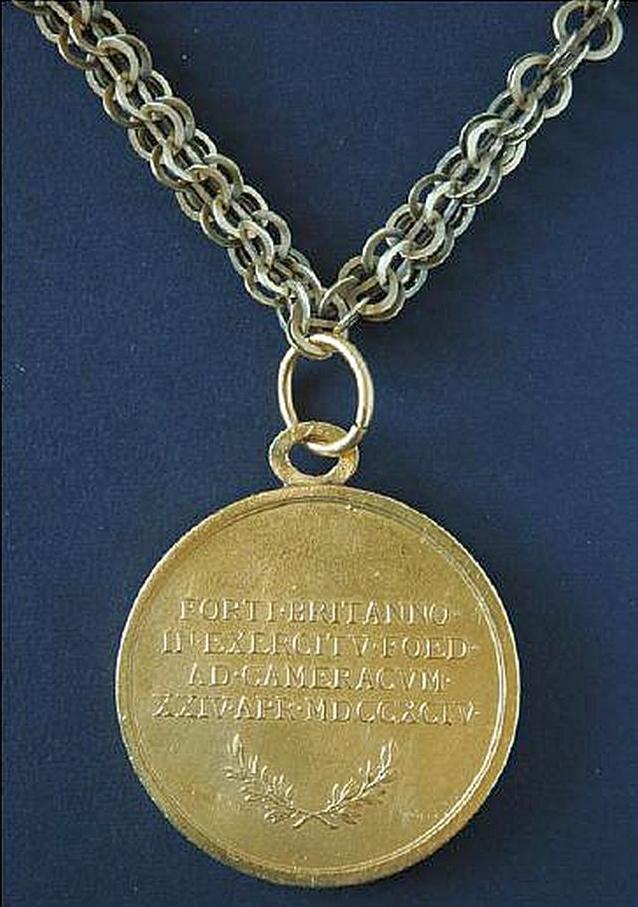
 0
0 -
Very nice Enzo

Hope these are detailed enough, if not they can be delated.
Regards Eddie

 0
0 -
Nice find

Here is a rather more modern Sindicato nacional de Trabajadores de las Ciencias.(SNTC)
Badge.
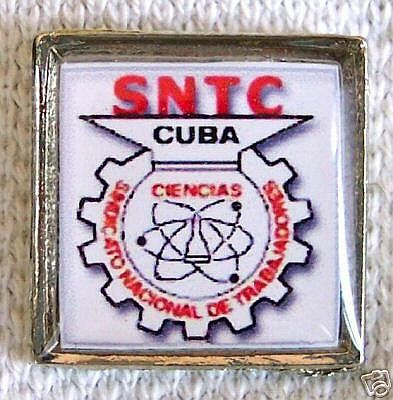
 0
0 -
Hello!
Any comment and opinion.Thanks for interest.
All the best

Nesredep
Very, very nice,
Looks as though it's found a good home for all to see

Regards Eddie.
0 -
Ahh, ok Robert,
Sorry it dosen't help much then , I'll dig around further if I find anything interesting for you I'll let you know.
Regards Eddie
0 -
As one of my links relates to Swiss Table Medals of a historical nature
I did not see the need to copy the many images to G.M.I.C. (would need to seek permission anyway!)
as the link is just to give an idea that the Swiss were into producing medals,
if not into wearing them.
Kevin in Deva.

Morning Kev,
That was a general remark, not just regarding the broken Table Medal link.
Don't you find it annoying following a link to a non-existant image?
It sadly often happens.
Regards Eddie.
0 -
And the Western Sahara Medal.
Regards Eddie.

 0
0 -
Another two.
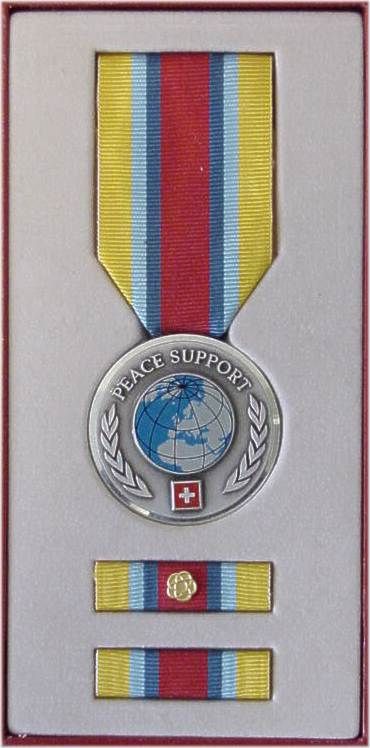
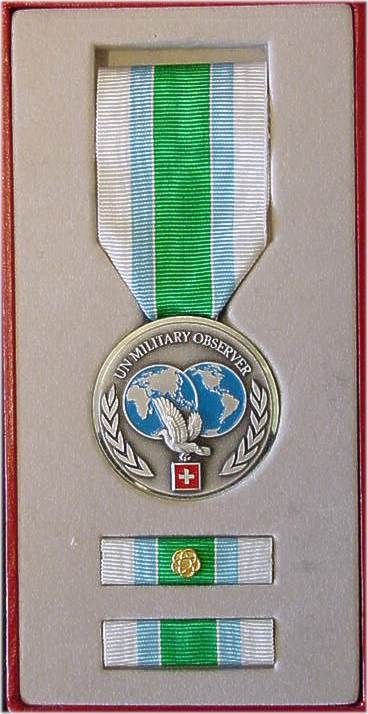

 0
0 -
These are the Images shown, with kind thanks to the insignia forum.
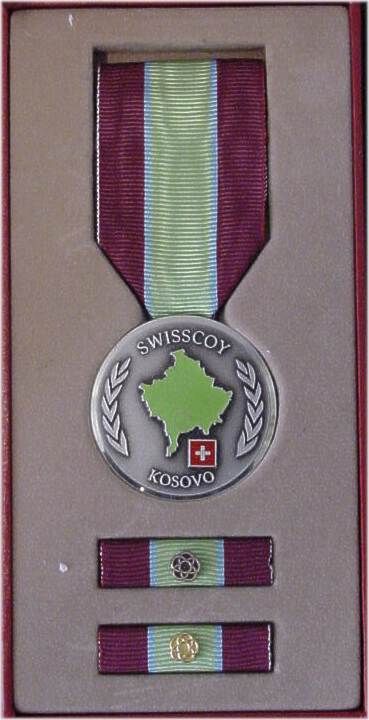


 0
0 -
Peacekeeping Service Medals: As a result of a Directive dated 10 March, 2000, Swiss soldiers who serve on peacekeeping mission are authorized to wear a medal for that service. The medals are awarded for 150 days in theatre.
To date, the following medals have been authorized: Peacekeeping Medals Korea, Namibia, Sahara (MINURSO), Bosnia-Herzegovinia and Kosovo.
Kevin in Deva.

Guys In an earlier post Laurence posted a link where the various Peacekeeping Medals are shown.
From the insigna forum.
One thing has to be remembered when posting endless links and linkups to image hosting sites, once these become broken the thread becomes worthless and valuable information is lost for ever.

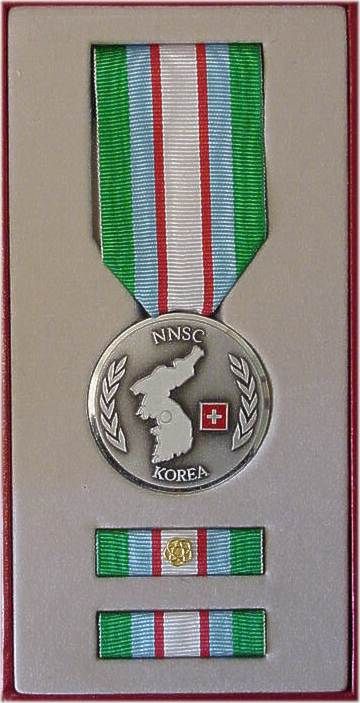

 0
0 -
Hello Robert,
Take a look here, maybe its among the collection.
http://www.permutti.com/sandro/uniformi/DDR.html
Regards Eddie
0 -
Hi Stogieman,
Not all answered but this is what I believe to be the case.
A) Nope, never was as far as I know
B) ?
C) This award was instituted on December, 13th, 1950. type 1, number and screw on the reverse.
After 1971 type 2, without screw and number.
D) ?
E) The first emission was on a pentagonal suspension (1950)
The Order of Peoples Labour was on a tri-folded ribbon not the Order Red Banner of Labour.
3 types, instituted on June 21st 1945, Only the 1st type on a tri-fold.
The first emission was awarded till 1950. There is a wreath-like eyelet between the order and the ribbon.
There was also a womens bow.
2. The 2nd emission was issued after 1950 and existed till 1977. no wreath
3. From 1977 - 1991, 3rd emission. It is characterized by the pentagonal shape of the obverse with a hammer and a sickle, the reverse is inscribed: "Order of Labour - Gold (respectively silver or bronze) PRB".
The first awarding took place in 1946. Stopped 1989.
F) It was always on the five-sided suspension.
I think you will find christerd and bolgarin are talking about the Order of Peoples Labour, a different award from the one you posted.
There are several more Labour awards:
Order of Peoples Labour
Order Red Banner of Labour
Order of Labour Glory
Medal Veteran of Labour
Medal of Labour Distinction
Regards Eddie.
0 -
Thank you very much Sergey,
I was thinking that it was a comparison between the two Tanks, interesting that they are about equal.
Best regards Eddie.
0 -
Sergey,
Absolutley no offence taken whatsoever

I also found it interesting to watch, and I have always been interested in tanks
I thought that you would find the other little clips interesting too.
The one in Russian that I linked seems to compare the two tanks but I can't understand what they are saying.
Best regards Eddie.
0 -
Interesting Sergey,
Did you see this one?
T-90 vs "Abrams" http://www.youtube.com/watch?v=9L0SPYJNhII...feature=related
No idea what he's saying though, maybe you could give a rough idea
And the "Beast" http://www.youtube.com/watch?v=hcMVpY4SoO8
I wonder if you can guess which one I would rather crew?
BTW this should really be in the Armour sub-forum.
Regards Eddie.
0 -
Hello Eddie,
thank you very much for the information, especially for the picture of the medal given to NCOs, of which I didn't see any picture besides a short description in Proch?zka's "Oesterreichisches Ordenshandbuch". No archival research in Austra had any success, and now I understand why: the medal, unofficial, was struck in Grat Britain! I didn't know that.
To Ed: "...They are wonderful sources of frustration...". Do you mean "how wonderful those pieces! I wish I were able to find something like that now"? I'm not worried... fine pieces appear (sometimes).
I hope to post the pictures of the large gold medal soon.
Thank you again and best wishes,
Enzo
Enzo,
Glad to help,

Here is a little more info from the article:
Villiers-en-Couche 1794
A British force was sent to the Low Countries to defend Holland against the French Revolutionary army. It was commanded by the Duke of York and included 14 cavalry regiments of which the 15th was one. On 24th April 1794, they, with a regiment of Austrian hussars charged a large body of French Cavalry. It turned out to be a trick and when the cavalry moved to one side a battery of artillery was revealed. But the French guns misfired and there were few casualties - at first. They charged into French Infantry who were dispersed. However, it was a hard fight and the regiment suffered many wounded but surprisingly few killed. The French had the most casualties; one farrier of the 15th was said to have killed 21 of the enemy that day.
The spelling of the name of this battle has changed over the years. The battle honour was granted in 1818 as VILLIERS-EN-COUCHE. Officers sabretaches from 1830-1902 have the honour embroidered as VILLIERS EN COUCHIE. In 1911 the spelling changed to VILLERS-EN-CAUCHIE (note, Villers with only one i). One outcome of the battle was a lasting connection with Austria. The Emperor Francis II gave a gold medal to each of the officers of the regiment and later presented them with the Order of Maria Theresa. The officers were:
Major William Aylett
Captain Pocklington
Captain Ryan
Lieutenant Calcraft
Lieutenant Keir
Cornet Blunt
Cornet Butler
Cornet Wilson
Also the gold lace worn on officer's uniforms and horse furniture was, in future, woven in the Austrian Wave pattern.
Regards Eddie.
0




A set Of Medals To a Zouave
in France
Posted · Edited by Taz
3?me R?giment de Zouaves
Service and Battles
Date/Service
1852 - Organised and mustered in Philippeville, Algeria
1852 - 1854 Campaign in Algeria
1854 - 1855 Campaign in Russia (Crimean War)
1857 - Campaign against the Kabyles, Algeria
1859 - Campaign in Italy (Italian unification)
1860 - Algeria
1862 -1867 - Campaign in Mexico
1864 -1869 Algeria
1870 - 1871 Franco-Prussian War
1881 - Tunesia
1885 - 1886 Tonkin (Indochina)
1900 - China (Boxer uprising)
1908 - 1914 Morocco
1914 - 1918 - The Great War
1914 - Tracy-le-Val, France
1915 - Champagne, France
1916 - Verdun, France
1918 - Moreuil-Noyon, France
1940 -1945 - Second World War
1943 - Le Faid, Tunesia
1944 - 1945 - Europe
1945 - Germany
1956 1962 - Algeria (Algerian War)
1962 - Regiment disbanded
Awards
Date/Award
May 31, 1859 - M?daille d'Or de Milan
May 31, 1859 - M?daille d'Or al Valore Militaire
November 09, 1863 - Croix de la L?gion d'Honneur
1919 - Croix de la Guerre 1914-1918 with 6 Palmes 1919M?daille Italienne de la Valeur
1919 - M?daille Militaire
1945 - Croix de Guerre 1939-1945 with 2 Palmes
Colours
Date/Campaign
1854 - 1855 - Sevastopol, Crimea
1857 - Kabylen, Algeria
1859 - Palestro, Italy
1863 - San Lorenzo, Mexico
1908 - 1912 - Morocco
1915 - Champagne, France
1916 - Verdun, France
1918 - Moreuil-Noyon, France
1943 - Le Faid, France
1945 - Danube, Germany
Battle Order
Date/Order
1852 - 1914 - 3?me R?giment de Zouaves
1914 - 1943 - 3?me R?giment de Marche de Zouaves
1943 - 1949 - 3?me Batallion de Zouaves Port?s
1949 - 1962 - 3?me Batallion de Zouaves